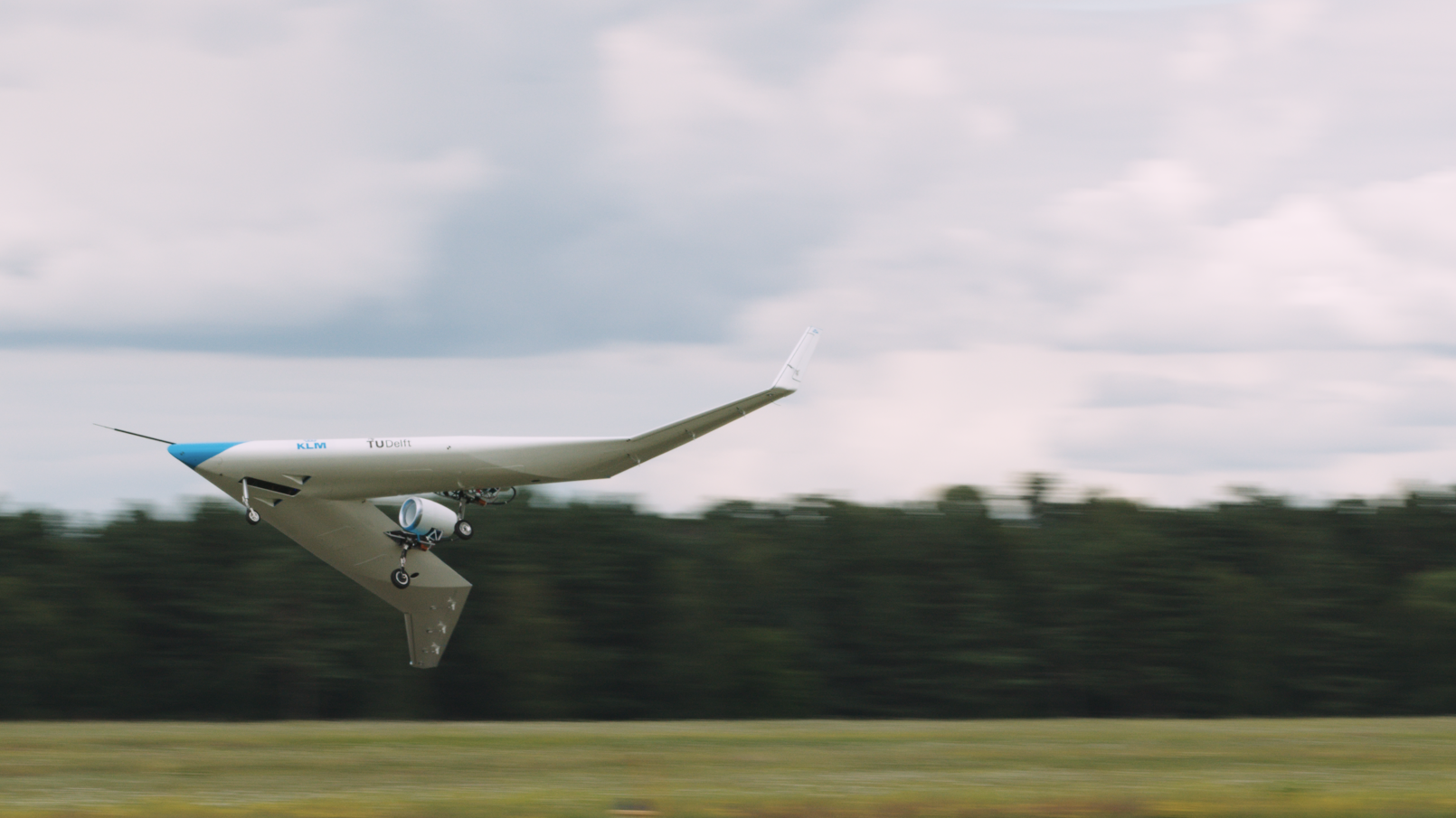
A scaled prototype of the futuristic Flying-V aircraft has taken flight for the first time. /Aerospace Engineering Faculty of Delft University of Technology
A scaled prototype of the futuristic Flying-V aircraft has taken flight for the first time. /Aerospace Engineering Faculty of Delft University of Technology
A scaled prototype of the futuristic Flying-V aircraft has taken flight for the first time, a pioneering event in the aerospace industry that could spark a new age of more environmentally friendly air travel.
The successful pilot flight of the remote-controlled model this September marks two years of work by engineers from Delft University of Technology (TU Delft) and the Dutch airline company KLM, which could eventually replace its own fleet with the Flying-Vs.
The aircraft's design is radical in that it is shaped like its namesake, Gibson's 'Flying-V' guitar, and its fuselage and wings are merged, meaning that the passengers travel inside the wings. This makes it comparatively smaller and lighter than other planes.
And as project lead Roelof Vos told CGTN Europe, "the aeroplane itself demands 20 percent less energy to fly the same distance with the same number of passengers as a state-of-the-art aeroplane is doing right now with the same engines."
It even has the potential to run on renewable hydrogen fuel.
In case you missed it:
· Aviation: A New Trail
· Europe's first electric plane points to the future of flying
· Hydrogen power: the sleeping giant of clean energy?
03:28
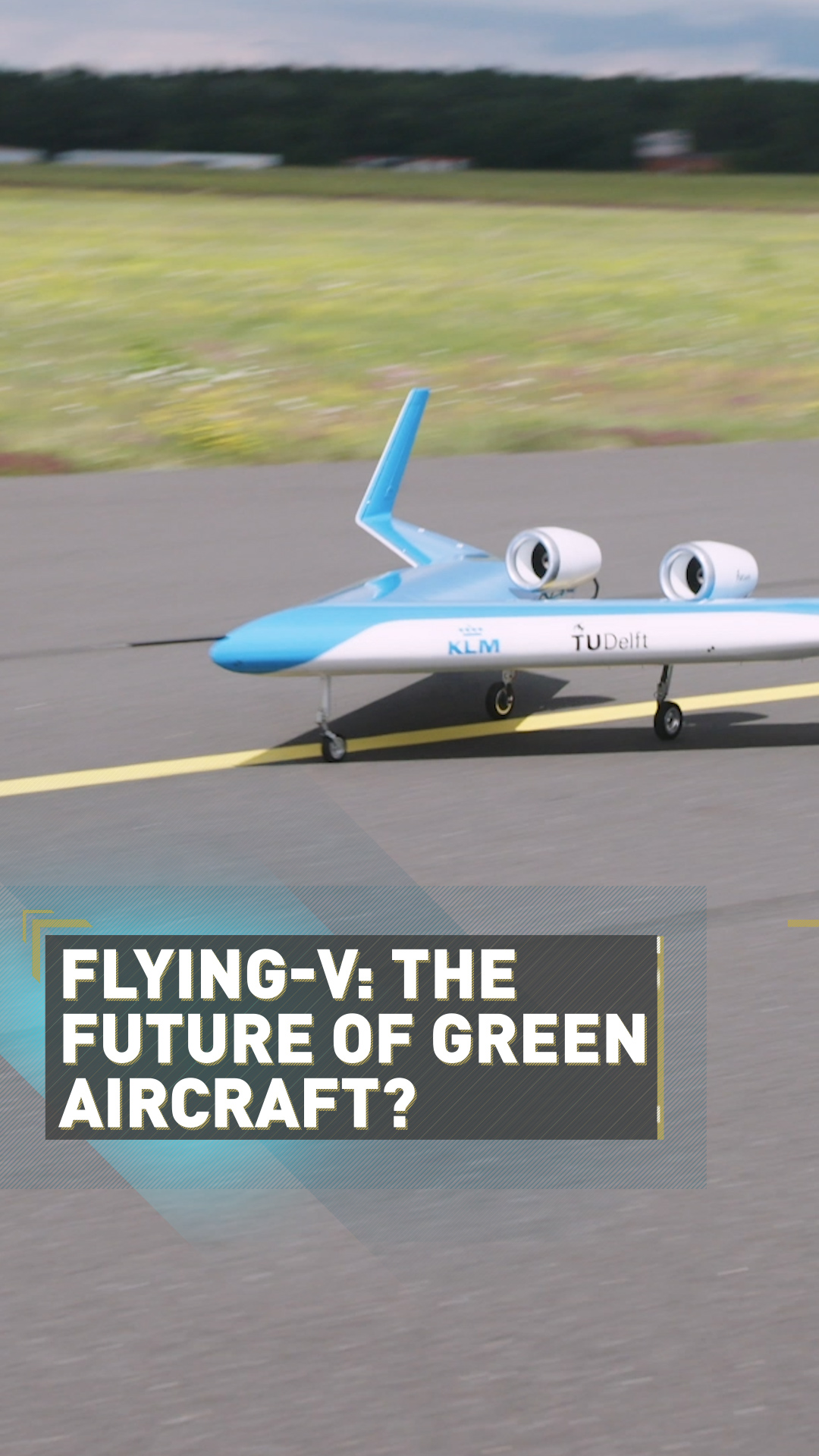
Ironing out the kinks
Vos and his researchers tested the 22.5 kg model at a well-guarded airbase in Germany, working with a team from the aircraft manufacturer Airbus, who are also financially backing the project.
"There were a couple of concerns with respect to the first flight," admitted Vos. "The first one was, will it actually take off?"
The designers had been worried that the model would rotate on the runway, and if it did get airborne, whether or not it would remain stable and be easy to control for the pilot.
"Fortunately, all of these things could be answered with a firm 'yes'," said Vos, with the model successfully taking off at 80km/hour. However, the trial did throw up some new issues.
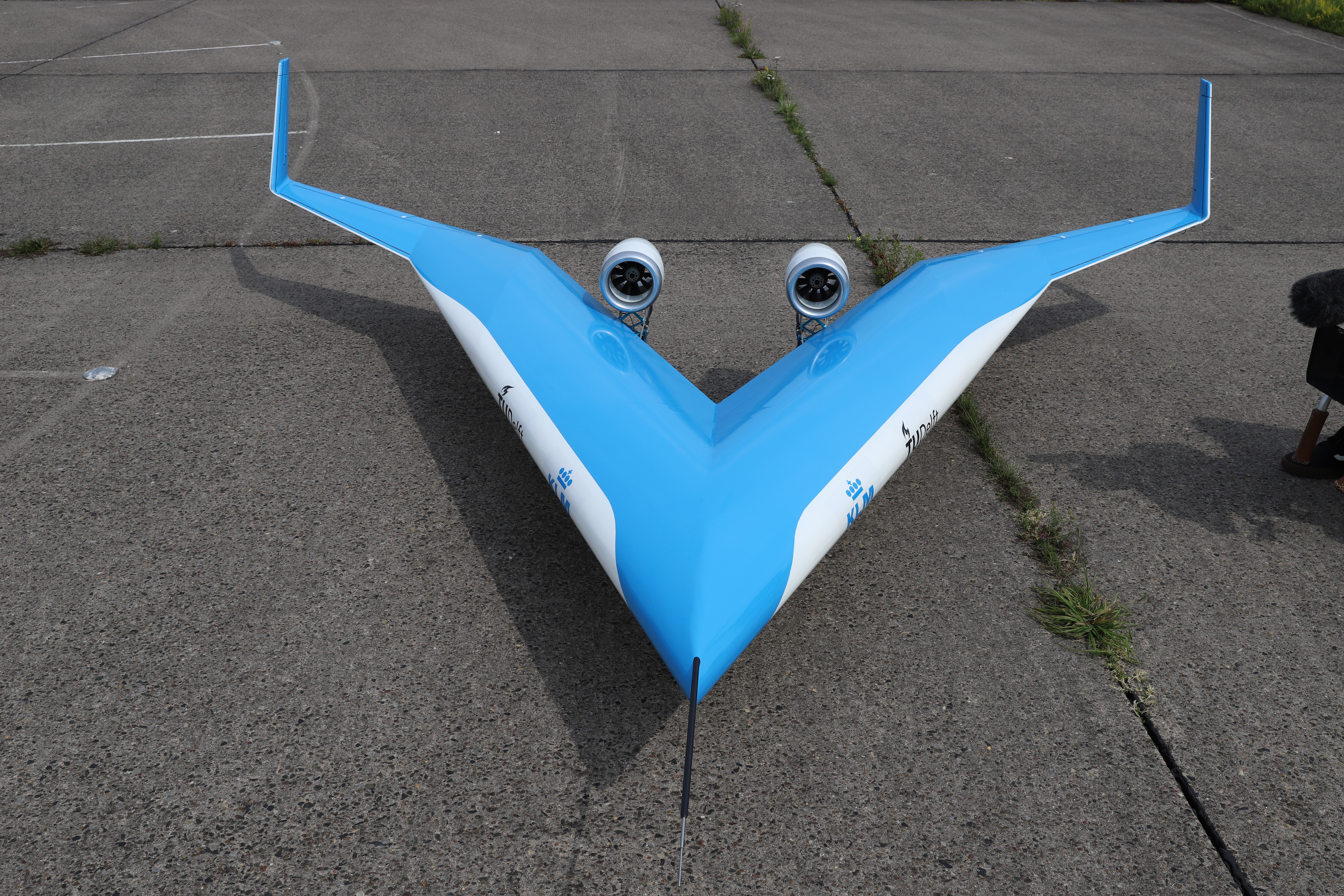
The Flying-V team tested the 22.5 kg model at a well-guarded airbase in Germany. /Aerospace Engineering Faculty of Delft University of Technology
The Flying-V team tested the 22.5 kg model at a well-guarded airbase in Germany. /Aerospace Engineering Faculty of Delft University of Technology
"There were some issues that are inherent to this configuration and somethings that we still need to resolve," says the engineer:
"While the aeroplane was indeed stable, there wasn't a whole lot of stability margin... what we need to do is shift the center of gravity of the aeroplane a little bit further forward to increase the stability."
According to one KLM spokesperson, the Flying-V model also "had a somewhat rough landing and the nose wheel was damaged. This was due to a gust of wind and the pilot's response to this.
"This is common practice with scaled model test flights (it's estimated that one out of two scaled aircraft gets damaged this way). The model is now being repaired and prepared for subsequent test flights."
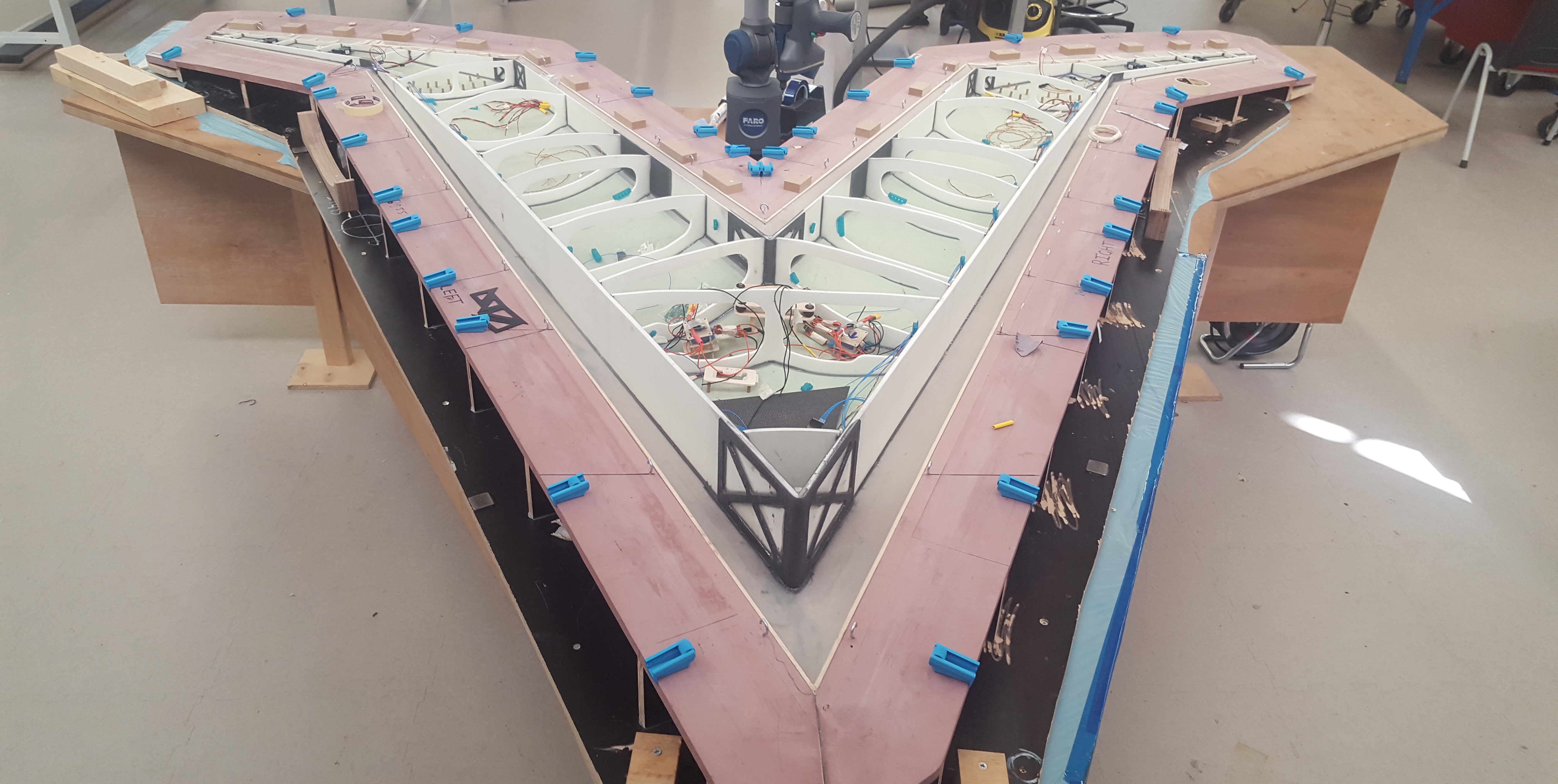
Project lead Roelof Vos says there were some issues that are inherent to the plane's shape. /Aerospace Engineering Faculty of Delft University of Technology
Project lead Roelof Vos says there were some issues that are inherent to the plane's shape. /Aerospace Engineering Faculty of Delft University of Technology
Environmental significance
Historically, airlines were keener to have larger aircraft for long-haul journeys, but now manufacturers are being pushed to reduce the size of their designs. This is in part because of consumer trends.
"What we've seen over the last decade is that there's more demand for point-to-point travel," says Vos. "There's less demand for aeroplanes that are in the 500-plus range in terms of the number of passengers they can carry."
KLM says the full-scale Flying-V will have the same wing span as an Airbus A350 - allowing it to use existing airport facilities - and the potential to carry the same amount of cargo and number of passengers, 314 at full capacity.
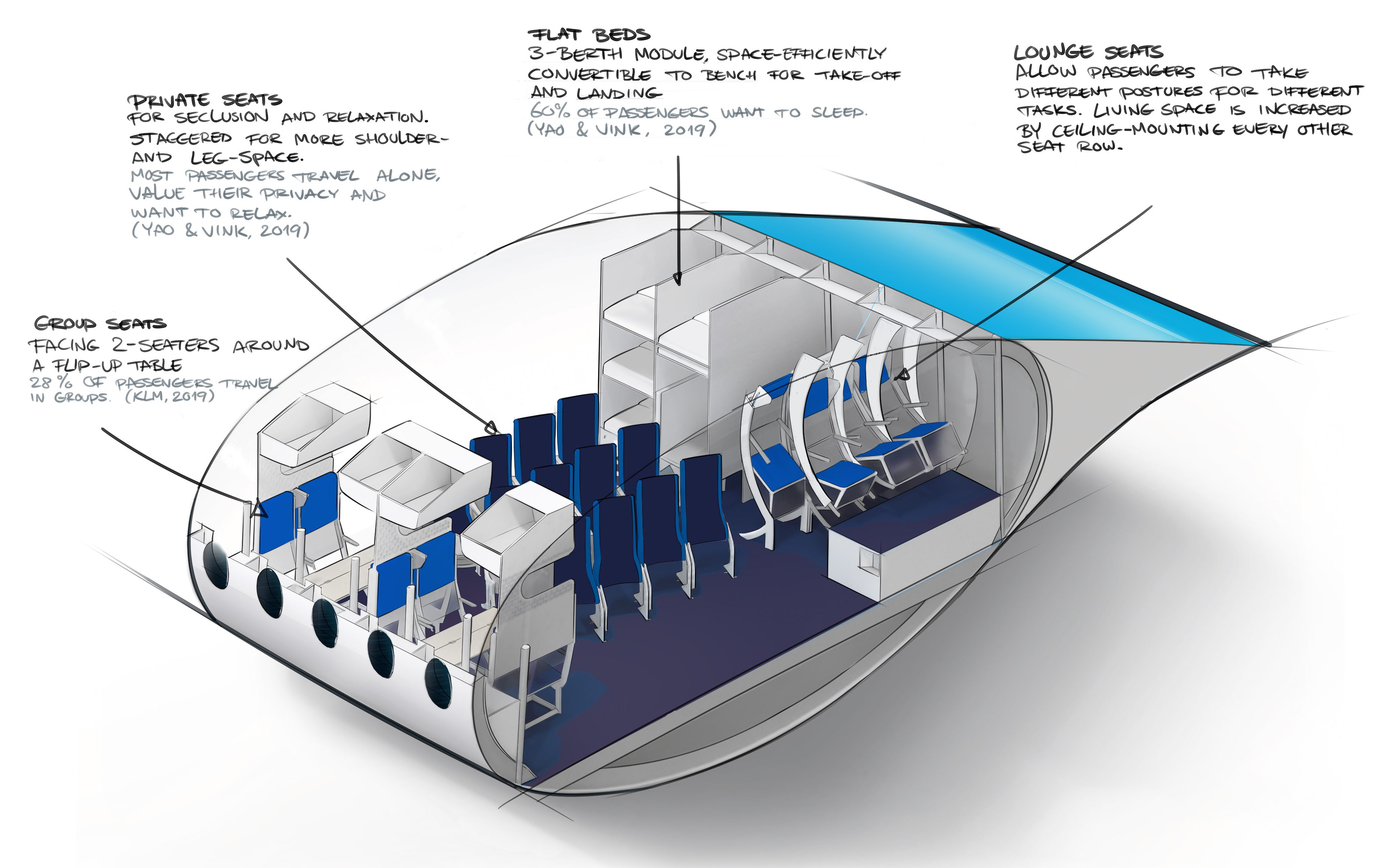
Project lead Roelof Vos says his team are looking at the interior design of the airplane to make sure the comfort level is "at least as good as what we have now, or maybe to see if we can also raise that."/Aerospace Engineering Faculty of Delft University of Technology
Project lead Roelof Vos says his team are looking at the interior design of the airplane to make sure the comfort level is "at least as good as what we have now, or maybe to see if we can also raise that."/Aerospace Engineering Faculty of Delft University of Technology
However, the Flying-V will be shorter and smaller, and crucially it will be able to fly farther than the A350 with the same amount of fuel, making it more ecologically friendly.
According to Vos, the team is also looking into including hydrogen as an alternative to kerosene.
In comparison to today's typical tube-and-wing airplanes, the Flying-V's shape is potentially highly suitable for carrying the fuel, which can be made entirely from renewable sources.
"We're using part of the internal volume to store liquid hydrogen - the cryogenic form of hydrogen - and then combust that hydrogen in a turbofan engine," says Vos, who admits that there are still a lot of questions about this aeroplane.
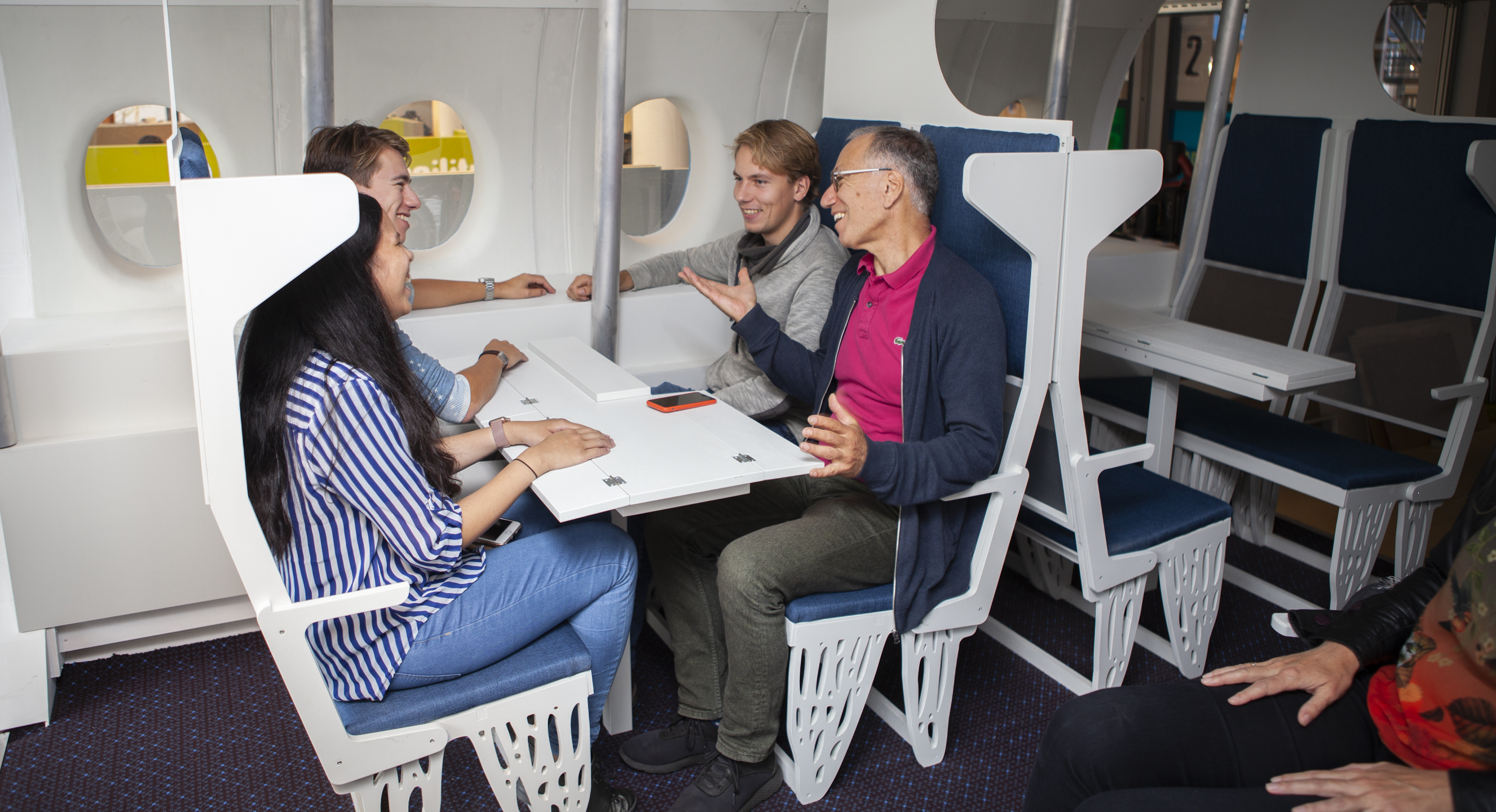
KLM says the full-scale Flying-V will be able to carry the same amount of cargo and number of passengers as an Airbus A350. /Aerospace Engineering Faculty of Delft University of Technology
KLM says the full-scale Flying-V will be able to carry the same amount of cargo and number of passengers as an Airbus A350. /Aerospace Engineering Faculty of Delft University of Technology
When can we book a ticket?
"I suspect that there will still be quite some time before the full-scale Flying-V will fly," says Vos.
He points out that the engineers are still in the research stage and still have to hone a whole host of features: its structure, stability, control mechanisms, aerodynamics and passenger comfort.
Vos says he's also in constant contact with cabin crews who give feedback on his initial floor plans:
"We also look a lot... at the interior design of the aeroplane to make sure the comfort level is at least as good as what we have now, or maybe to see if we can also raise that."
Once the design is given the go-ahead, there's still the development time for aircraft of at least seven years.
"I suspect, also with the idea of current aeroplanes being still in the fleet, that it will not be before 2040 that we see this aeroplane in the sky," says the engineer.